Easy to make from one readily available ingredient - dried unsweetened coconut - homemade coconut butter is a thick, rich, and fragrant coconut spread, useful for everything from spreading on a tasty breakfast toast, to dolloping into smoothies or curries. While food from the heavens may be overstating it just a little bit, coconut butter, also known as coconut manna, is a highly useful Food Find to keep in your natural foods plant-based pantry and is a snap to make at home.

While widely available on store shelves, coconut butter requires only 10 minutes or so of food processor time, leaving you with a lovely, useful shelf stable preparation that you can use in a variety of ways. When warmed, coconut butter is a thick, rich, and fragrant coconut syrup, and when at room temperature or cooled, it solidifies but is still scoopable and spreadable.
Jump to:
Making coconut butter at home
Coconut butter can easily be made at home using a food processor. Taking about 10 minutes or so, which could vary depending on the strength and efficacy of your food processor, all you need to do is pour in unsweetened dried shredded coconut into your processor, turn it on and leave it running until the coconut has been broken down into a thick liquid puree. Occasional pauses to scrape down the sides of the processor bowl will ensure a consistent and smoother final product, and will also give your processor a short break from its hard work.
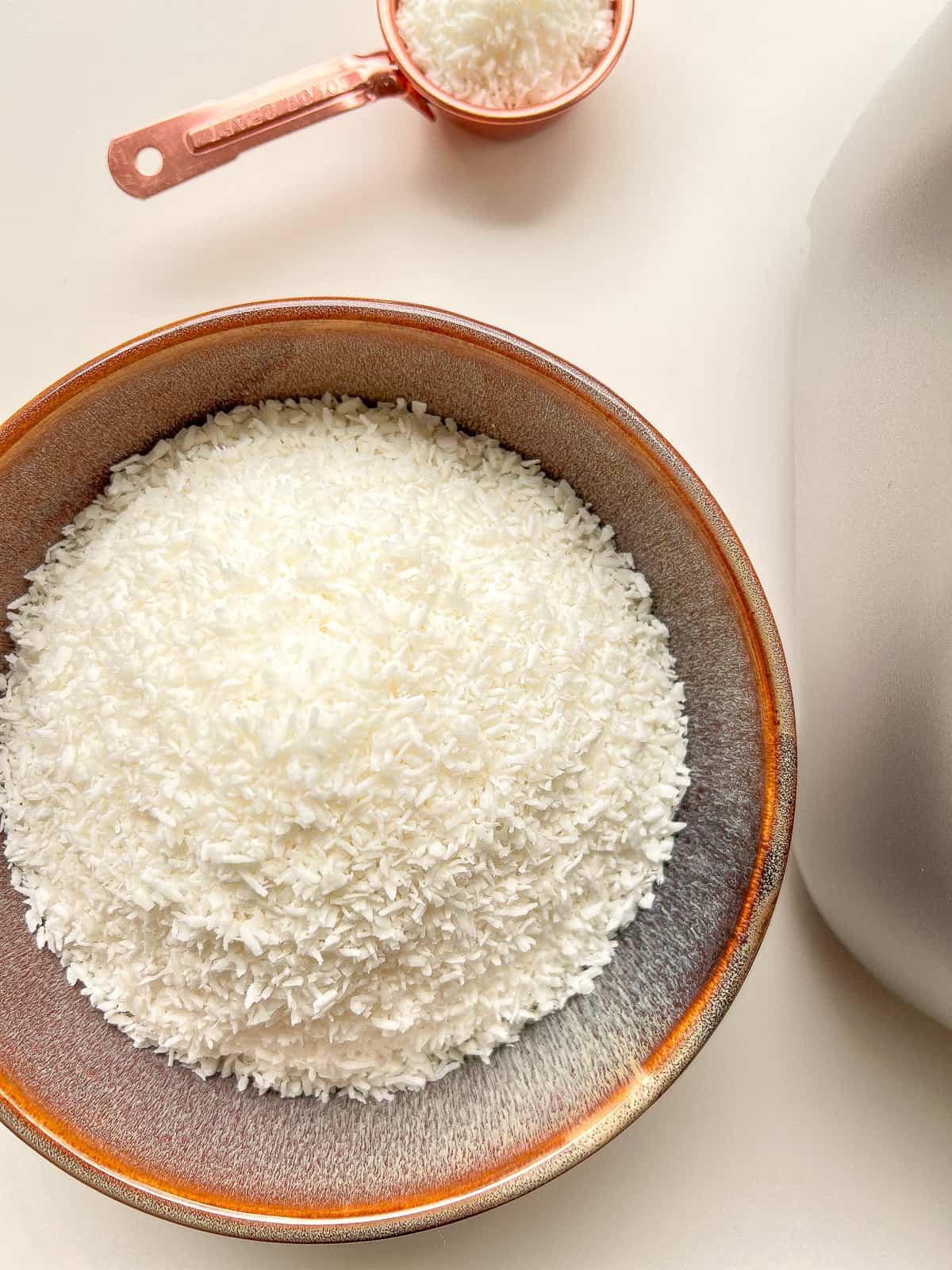
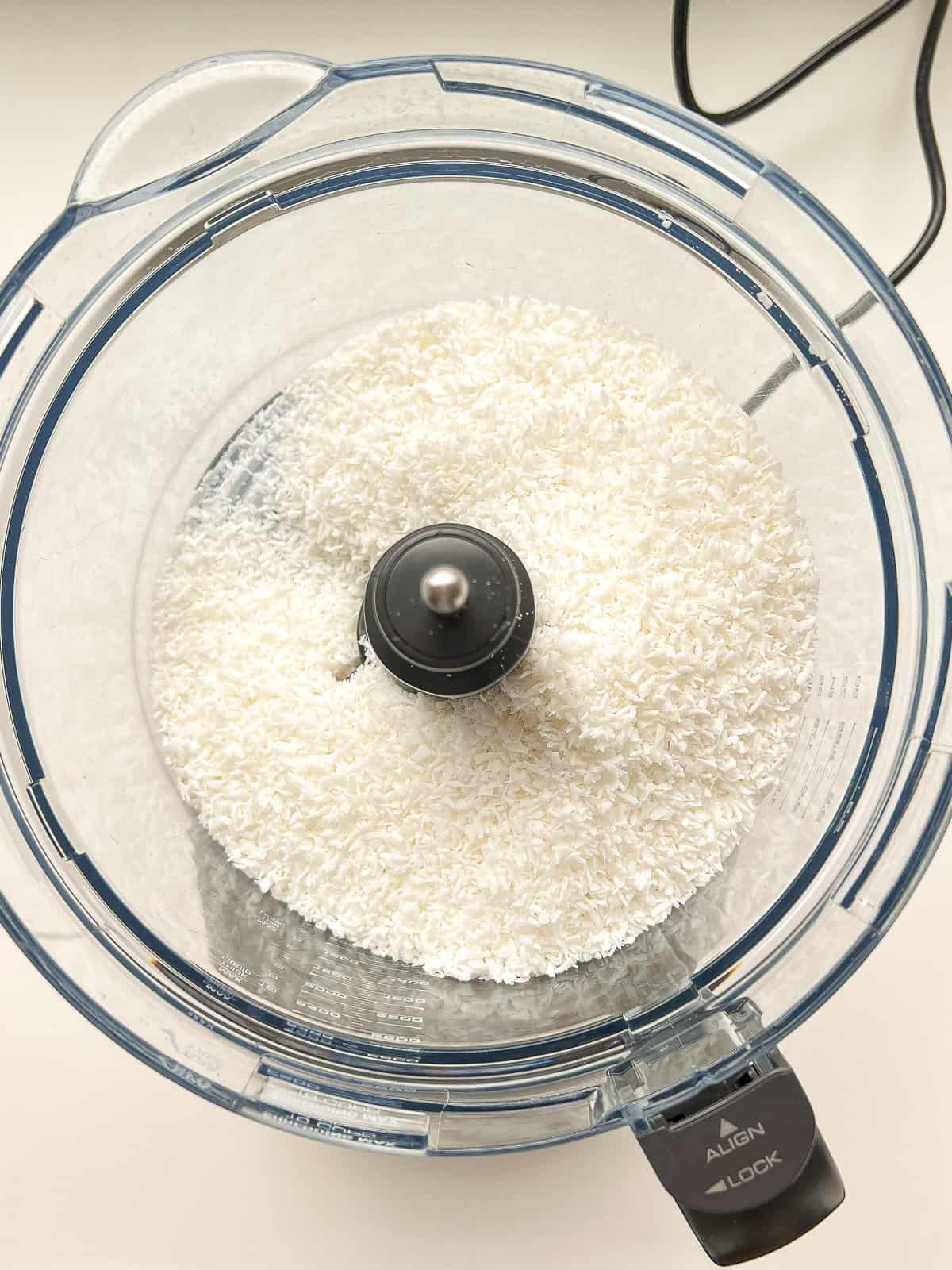
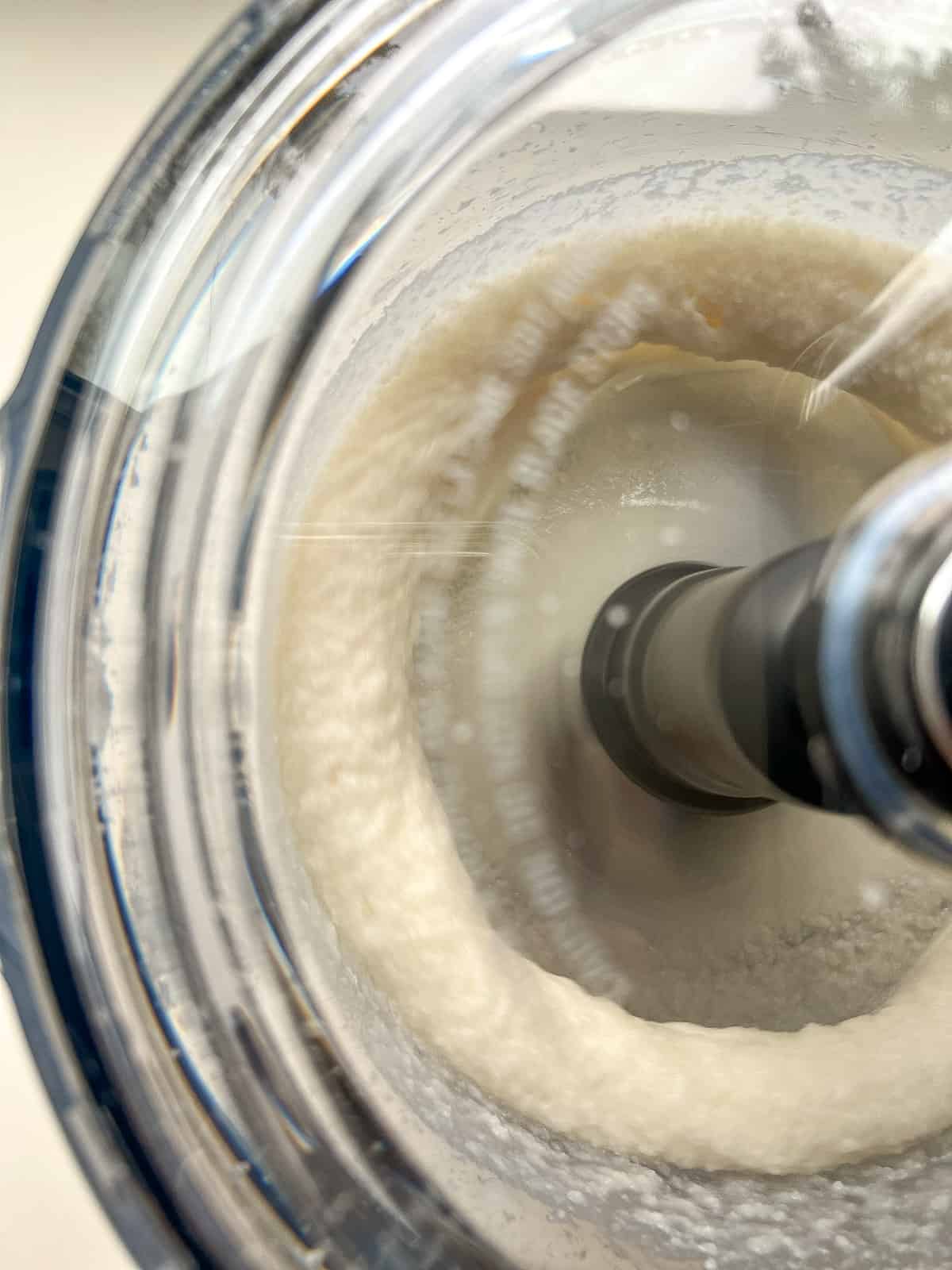
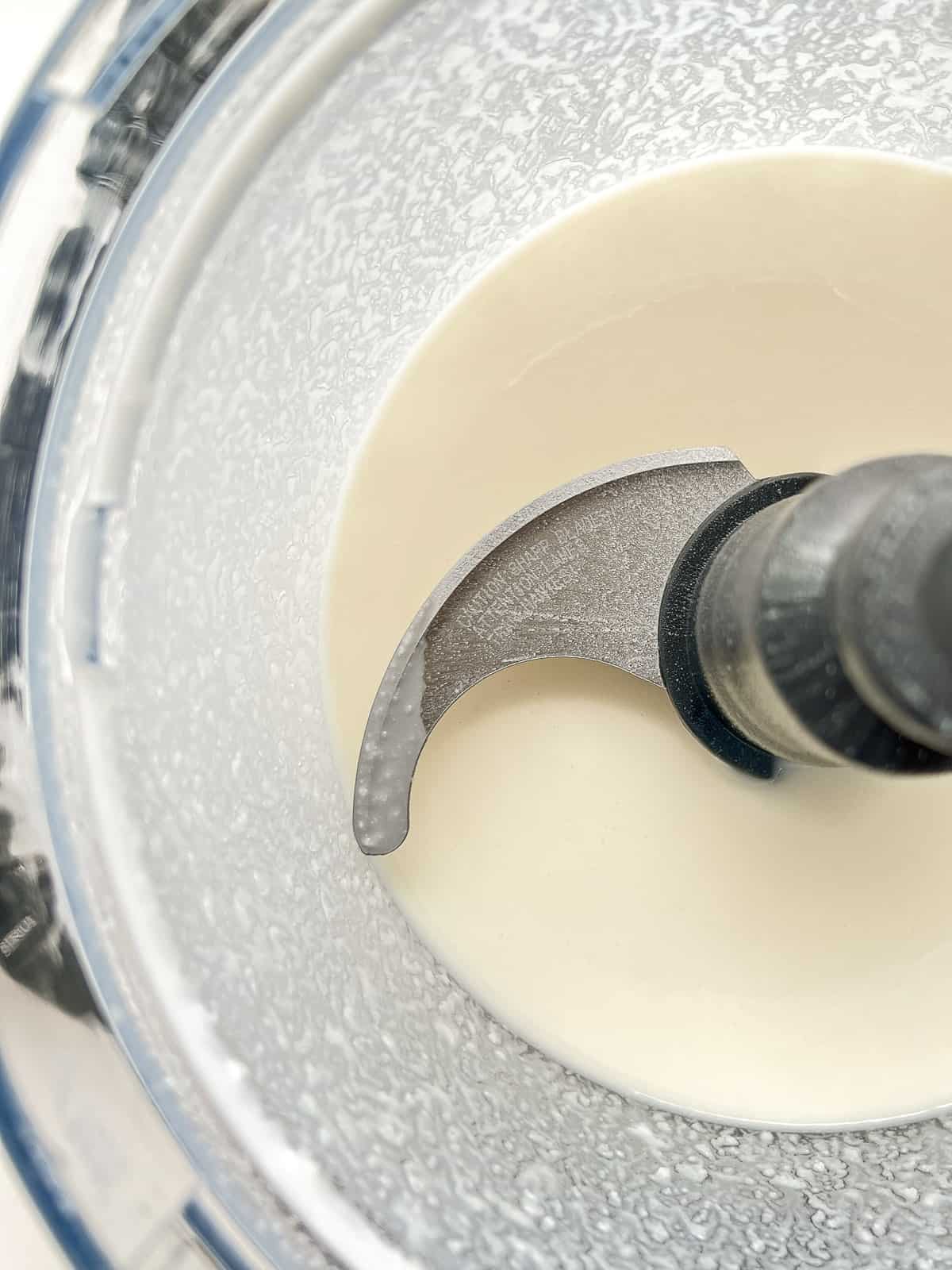
At the end of the processing time you will have a warm and easily pourable liquid puree that you can jar up as you wish, and after those jars sit out at room temperature for a few hours, you will find that the puree has firmed up into a stiff butter.
Your homemade coconut butter will be mostly smooth with a small but still detectable trace of coconut texture, which is true even in super smooth store bought varieties. You may find some variation in how smooth your homemade coconut butter is depending on the strength of your food processor and how long you puree the coconut.
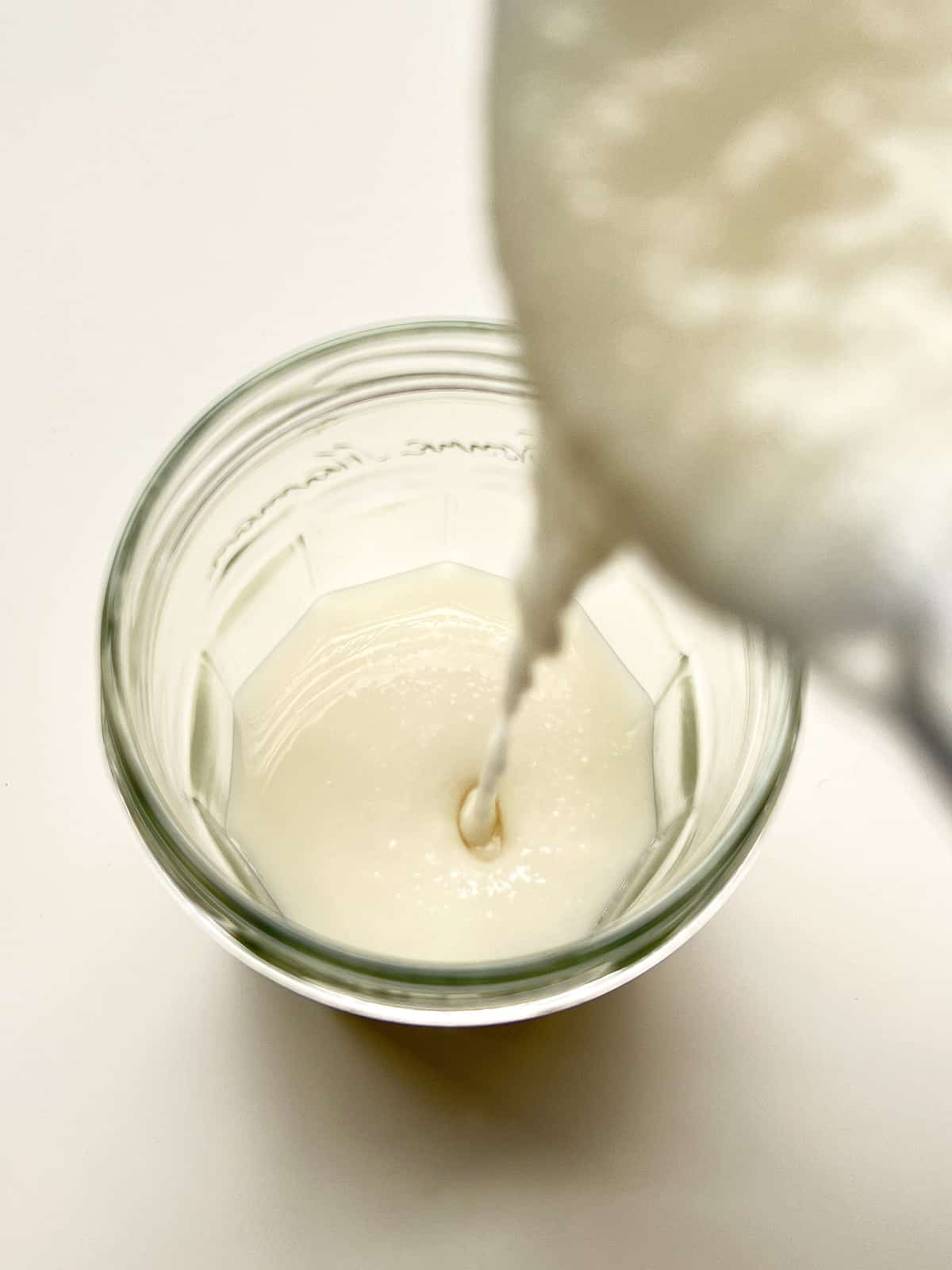
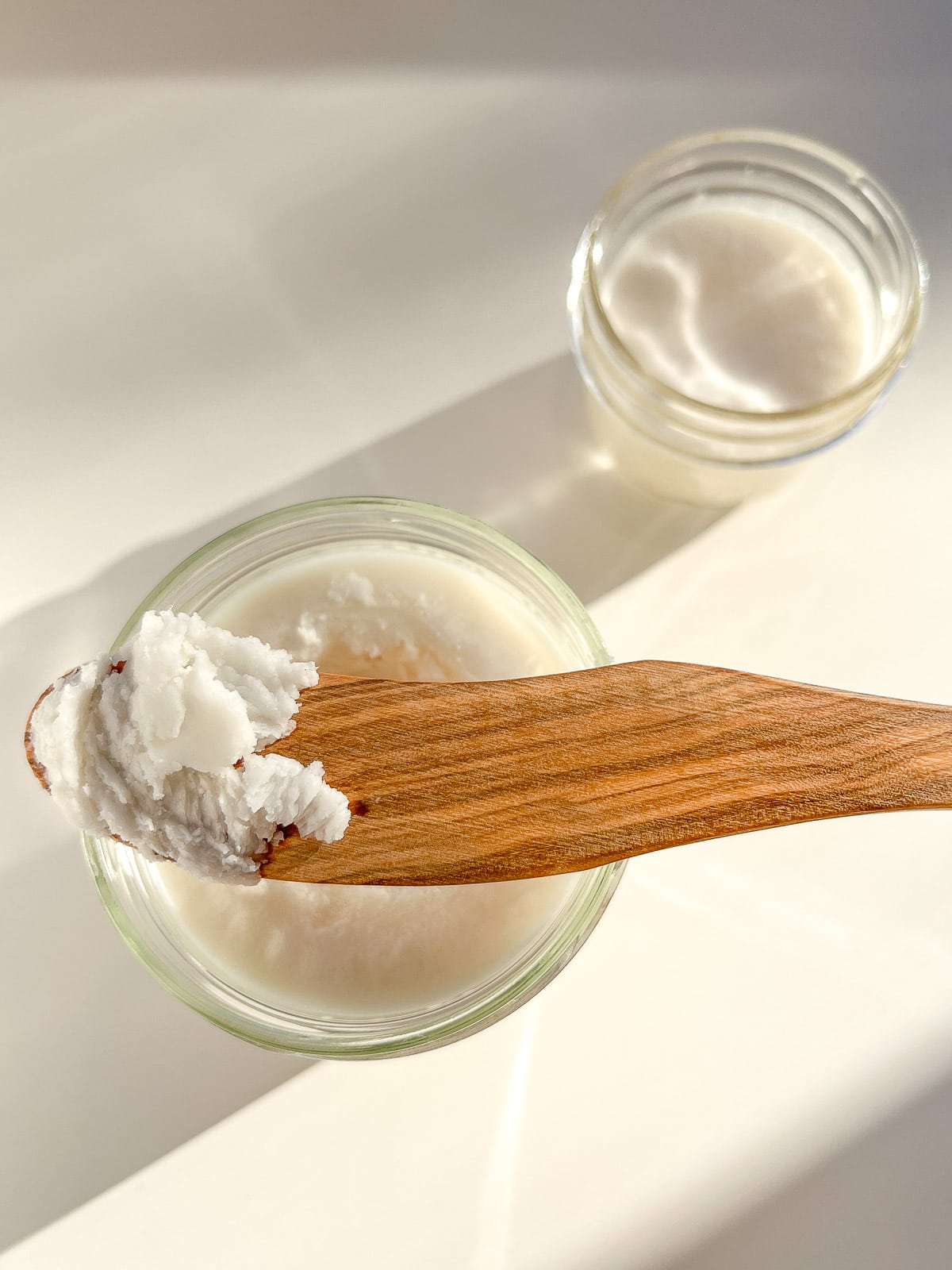
How much coconut do you need to make coconut butter?
The rough ratio of unprocessed coconut to finished coconut butter is about 4 to 1, meaning it takes about 4 cups of shredded coconut to make 1 (heaping) cup of coconut butter, an amount I find I can use in a reasonable amount of time, although truly, can you have too much of a good thing? You could easily make a double batch of coconut butter as long as your food processor bowl can fit the initial volume of shredded coconut.
Coconut butter is a useful kitchen helper
Coconut butter can be used as a spread, dolloped directly into curries, warmed and used as a syrup, scooped into smoothies, or even diluted with water to make a quick coconut milk substitute. Anywhere a rich coconut flavour is desired is a great place to start to use coconut butter, and because it is so easy to make at home, you can keep a regular supply of it on hand.
While coconut butter may look similar to solid coconut oil that you may have bought before in tubs - in that both coconut oil and coconut butter are white and semi-solid at room temperature - coconut butter contains whole coconut, and not just coconut fat, making it very versatile.
Storing coconut butter
Homemade coconut butter is more economical than buying the store made variety, and you can make as big a batch as you want and jar it up accordingly. I like to transfer homemade coconut butter, while still warm and liquid from its stint in the food processor, into medium sized or small jars. Smaller jar sizes are useful if you want to heat up and soften your solidified coconut butter for easier spreading, which I often do, either by immersing the jar in hot water, or popping it into the microwave for a few seconds as needed.
How to use coconut butter
If, like me, you use a variety of coconut-based products in your kitchen, you will easily find opportunities to use coconut butter even without a recipe. Next time you need a dollop of coconut milk for a curry or a smoothie but don’t want to open a whole can, use a scoop of coconut butter instead - it is, after all, just pure pureed coconut! Try substituting coconut butter where you might use a bit of plant based cream or cashew cream, let it melt on top of a toasted baked good or some hot pancakes, stir it into an on the fly coconut hot chocolate, or warm it up and pour it over pancakes, desserts, savoury curries, and anything else you can think of. Once you get the hang of how coconut butter performs and tastes, at both room temperature or when heated up, you’ll find more and more ways to use it.
I regularly use coconut butter when making Banana "supreme" toast, slathered on a slice of toasted whole grain bread alongside almond butter, sliced bananas, cinnamon, honey, hemp seeds and other toppings for a quick but special feeling everyday breakfast.
Homemade Coconut Butter
Ingredients
- 4 cups unsweetened shredded coconut
Instructions
- Pour the shredded coconut into the bowl of your food processor fitted with the standard food processing blade, and turn on, letting the processor work the coconut into a liquid puree. This will probably take about 10 minutes (possibly more depending on your processor).
- Pause the processor a few times to scrape down any unprocessed coconut that gets stuck on the sides and to let the processor cool a little bit.
- When the puree is smooth enough to your liking, or as smooth as your processor can make it, pour the warm liquid puree into clean jars. Leave out on the counter to cool and solidify, and then store in the cupboard. Enjoy!

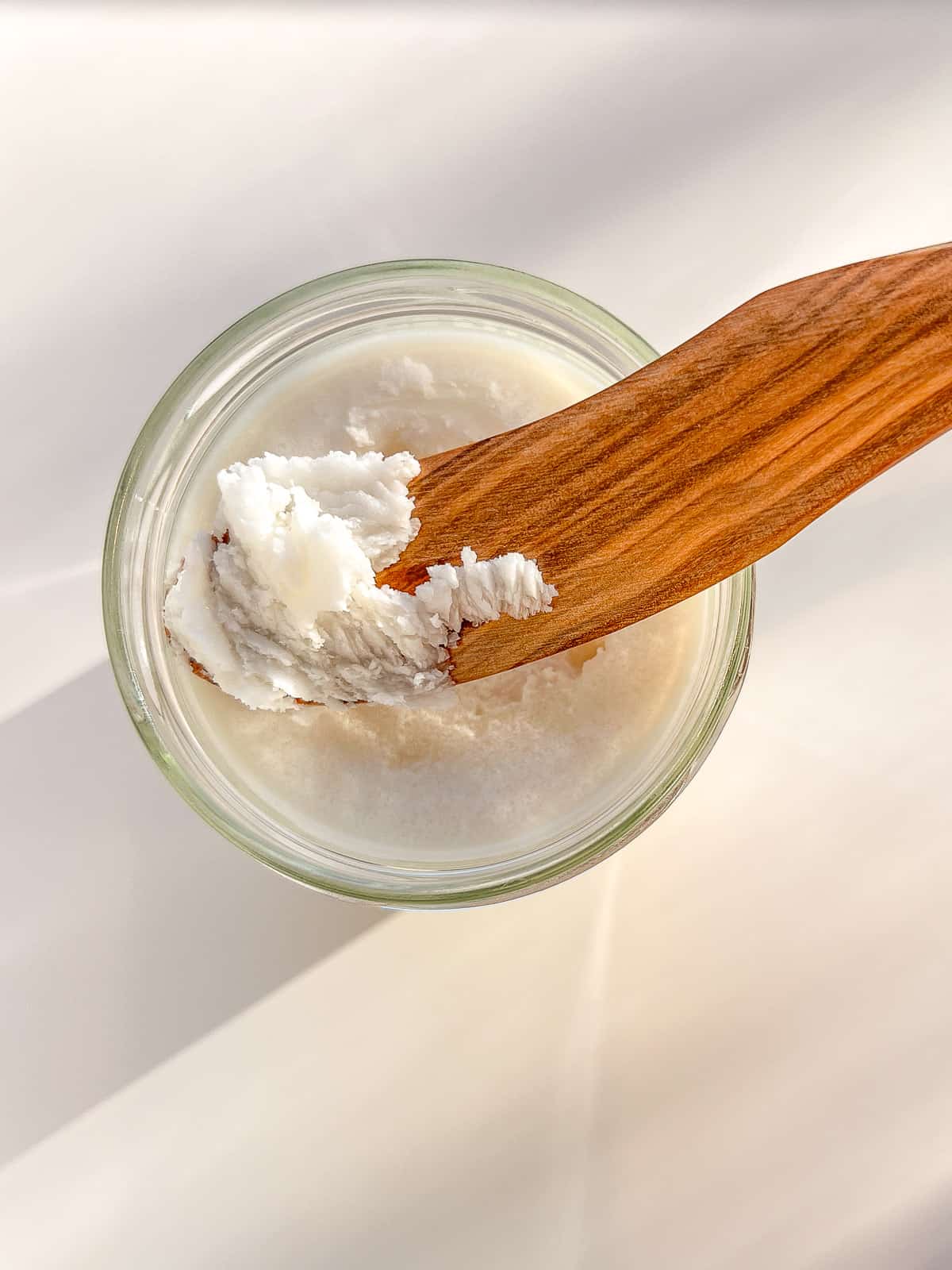
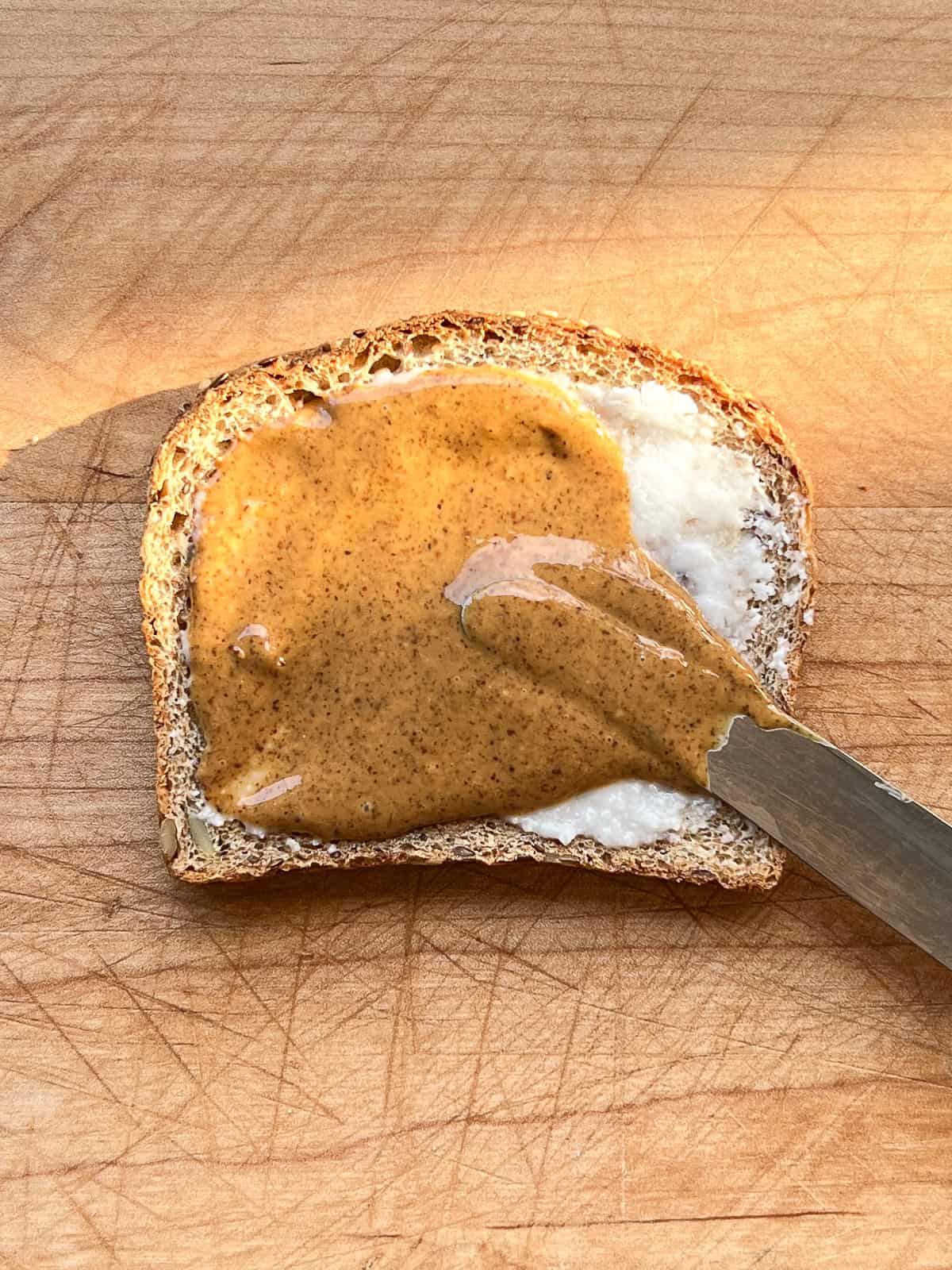
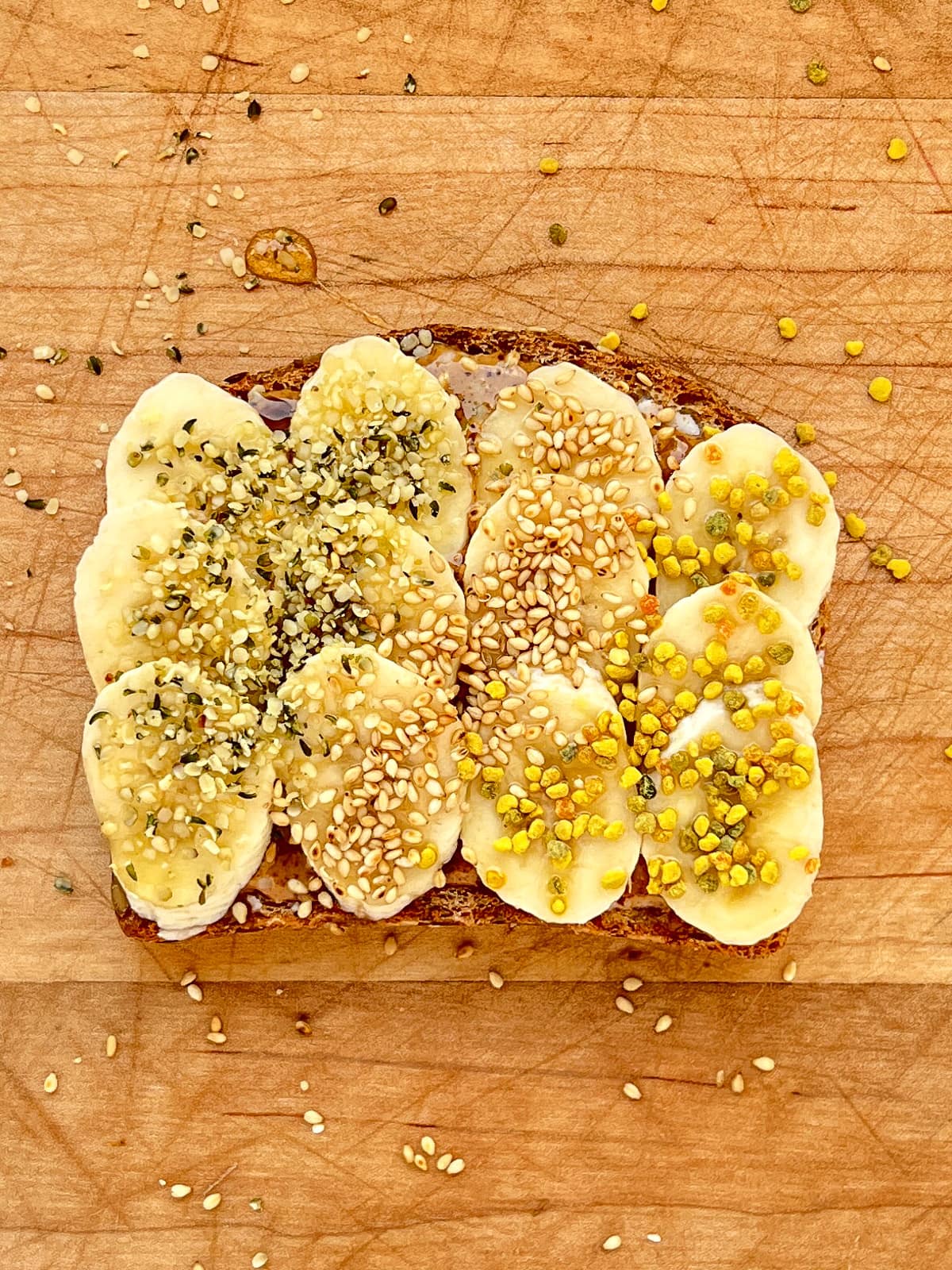
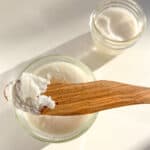
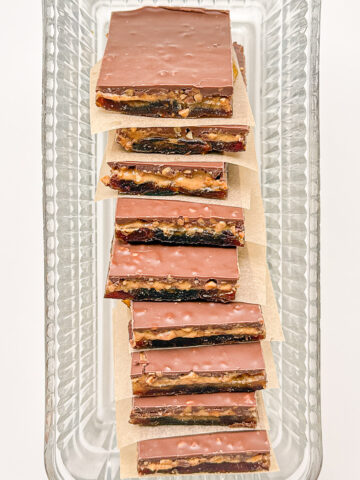
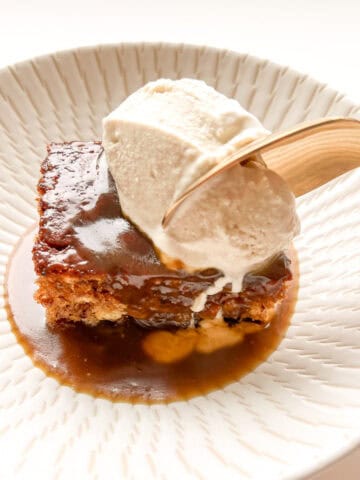

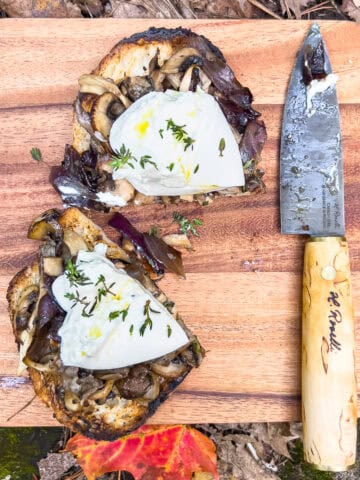
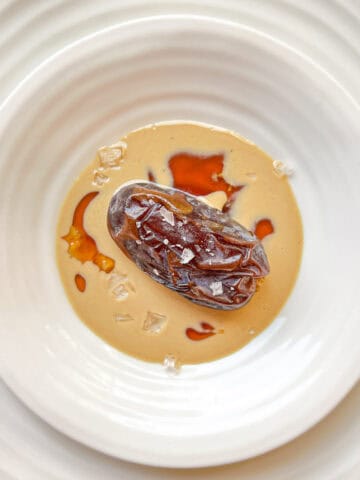
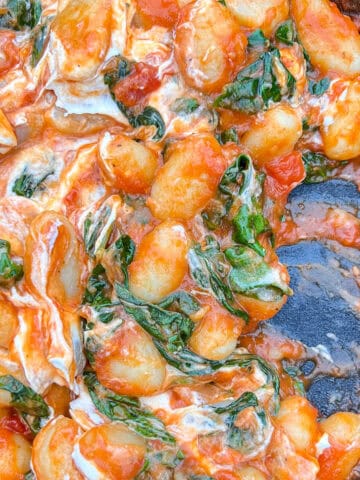

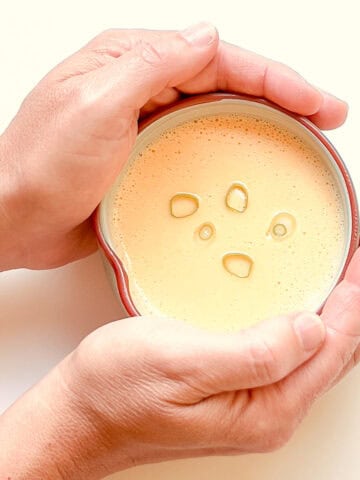
Leave a Reply